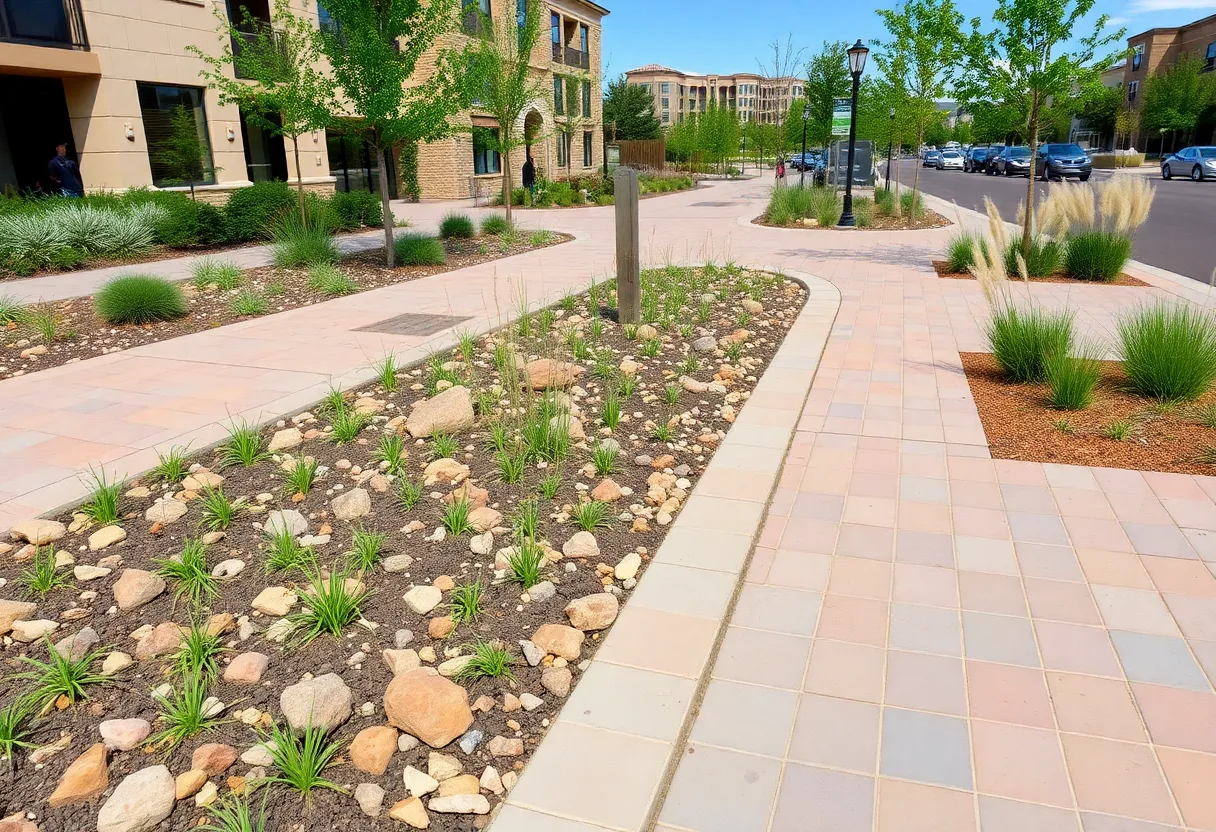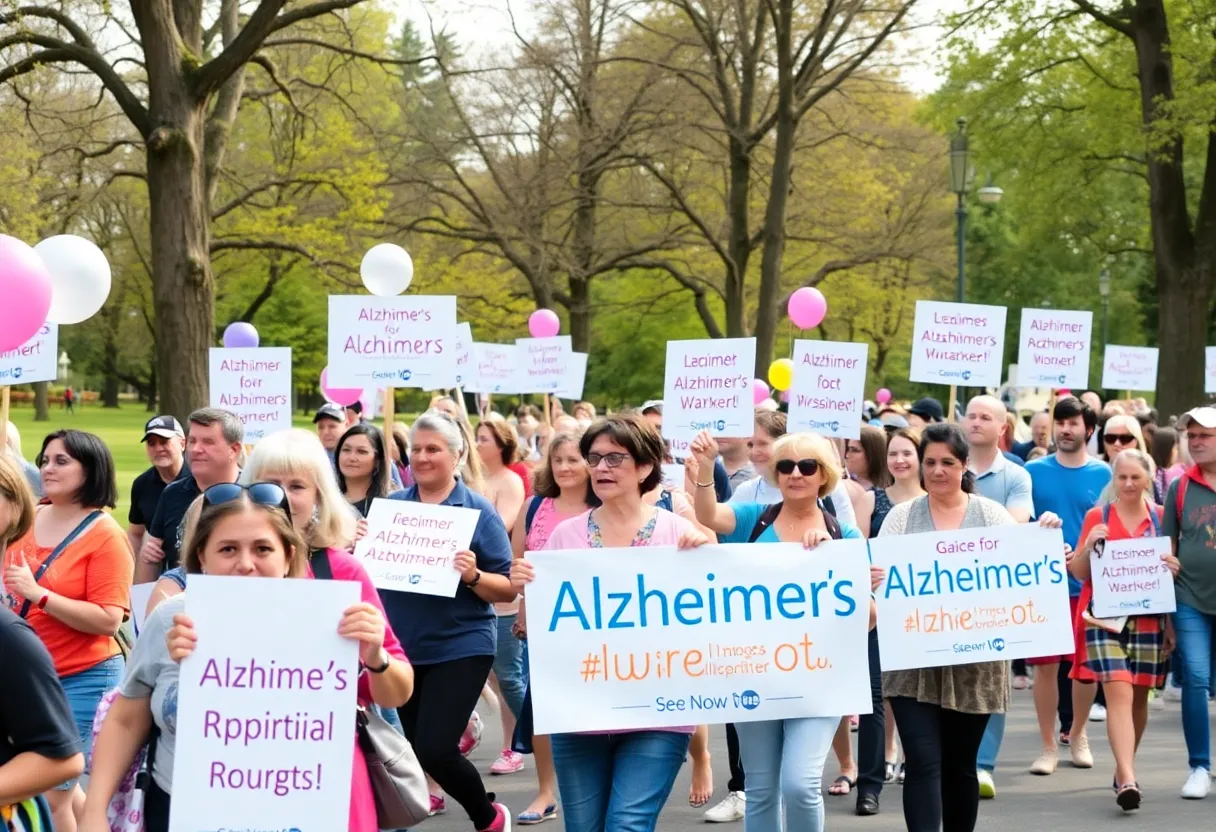Albuquerque, October 6, 2025
Albuquerque has introduced a new rebate program aimed at promoting green stormwater infrastructure, including rain gardens and permeable pavements. By offering financial incentives of up to $5,000, the city seeks to encourage residents and businesses to mitigate flooding and enhance environmental sustainability. Early reports indicate positive outcomes from initial participants, showcasing the program’s potential to address stormwater challenges effectively.
Albuquerque Launches Rebate Program to Boost Green Stormwater Infrastructure
Albuquerque, NM – City officials have begun a new initiative to encourage the installation of green stormwater infrastructure among residents and businesses. This program, launched today, provides financial incentives to help reduce flooding and enhance environmental sustainability across the city.
The core of the effort focuses on promoting features like rain gardens and permeable pavements, which allow water to infiltrate the ground rather than pooling on surfaces. These systems are designed to manage stormwater more effectively, minimizing urban runoff and its associated challenges. Participants can receive rebates up to $5,000 to offset installation costs, making these upgrades more accessible to a wider audience.
Early participants in the Northeast Heights area have already reported positive outcomes, including better water absorption during heavy rains and reduced strain on local drainage systems. This hands-on success demonstrates how such infrastructure can provide immediate benefits while contributing to broader sustainability goals.
Addressing Flooding and Environmental Concerns
Albuquerque faces ongoing issues with stormwater management, particularly during monsoon seasons when intense rains can overwhelm traditional infrastructure. The new program aims to counteract these problems by integrating natural solutions into urban landscapes. Rain gardens, for instance, capture and filter rainwater through vegetation and soil layers, preventing pollutants from entering waterways. Permeable pavements, on the other hand, use porous materials that let water seep through to underground aquifers, replenishing groundwater supplies.
By adopting these measures, the city expects to see decreases in localized flooding, improved water quality, and lower maintenance costs for public drainage networks. The initiative aligns with wider efforts to build resilience against climate change impacts, such as more frequent extreme weather events. Officials emphasize that widespread participation could transform how Albuquerque handles rainwater, turning potential hazards into opportunities for ecological improvement.
Details of the Rebate Program
To qualify for the rebates, property owners must submit plans for approved green infrastructure projects. The application process involves an initial assessment to ensure compatibility with local conditions, followed by verification after installation. Funding for the program comes from city budgets allocated for environmental projects, with the goal of scaling up based on demand and results.
Businesses, including commercial properties and multifamily housing, are equally eligible, encouraging a community-wide approach. Educational resources, such as guides on design and maintenance, will be provided to support applicants. The rebates cover a portion of materials and labor, with the maximum amount of $5,000 available for larger-scale implementations.
City planners highlight that these incentives are part of a long-term strategy to make Albuquerque more livable and resilient. Initial rollout targets high-risk areas, but expansion to other neighborhoods is anticipated as the program gains traction. Residents interested in participating can access details through official city channels.
Background on Stormwater Challenges in Albuquerque
Historically, Albuquerque’s rapid growth has strained its stormwater systems, leading to frequent flooding in low-lying areas and erosion along arroyos. Traditional concrete-based solutions have proven insufficient for handling increased volumes of runoff from impervious surfaces like roads and parking lots.
Green infrastructure represents a shift toward mimicking natural water cycles in urban settings. Similar programs in other cities have shown reductions in flood events by up to 30 percent in targeted zones. In Albuquerque, the focus on rain gardens and permeable pavements builds on pilot projects that have already proven effective in managing peak flows.
The Environment Department oversees the initiative, drawing on data from recent storms to prioritize interventions. By empowering residents and businesses, the city fosters a collaborative effort to safeguard public health and the environment. As implementation progresses, monitoring will track improvements in water retention and biodiversity, informing future enhancements.
This program arrives at a timely moment, coinciding with heightened awareness of sustainable practices amid ongoing drought concerns in the Southwest. Albuquerque’s commitment to these innovations positions it as a leader in urban water management.
FAQ
What is the new initiative in Albuquerque?
City officials have begun a new initiative to encourage the installation of green stormwater infrastructure among residents and businesses. This program, launched today, provides financial incentives to help reduce flooding and enhance environmental sustainability across the city.
What types of green stormwater infrastructure are promoted?
The core of the effort focuses on promoting features like rain gardens and permeable pavements, which allow water to infiltrate the ground rather than pooling on surfaces.
What financial support is available through the program?
Participants can receive rebates up to $5,000 to offset installation costs, making these upgrades more accessible to a wider audience.
Where have early benefits been observed?
Early participants in the Northeast Heights area have already reported positive outcomes, including better water absorption during heavy rains and reduced strain on local drainage systems.
How does this initiative help with flooding and sustainability?
These systems are designed to manage stormwater more effectively, minimizing urban runoff and its associated challenges. The initiative aligns with wider efforts to build resilience against climate change impacts, such as more frequent extreme weather events.
Key Features of the Green Stormwater Infrastructure Program
| Feature | Description | Benefits |
|---|---|---|
| Rain Gardens | Vegetated depressions that capture and filter rainwater | Reduces runoff, improves water quality, supports local biodiversity |
| Permeable Pavements | Porous surfaces allowing water infiltration to groundwater | Minimizes flooding, replenishes aquifers, lowers drainage maintenance |
| Rebates Up to $5,000 | Financial incentives for installation costs | Makes upgrades affordable for residents and businesses |
| Target Area: Northeast Heights | Initial focus with proven early results | Demonstrates effectiveness in high-risk zones |
| Sustainability Focus | Builds resilience to climate impacts | Combats flooding, enhances environmental health citywide |





